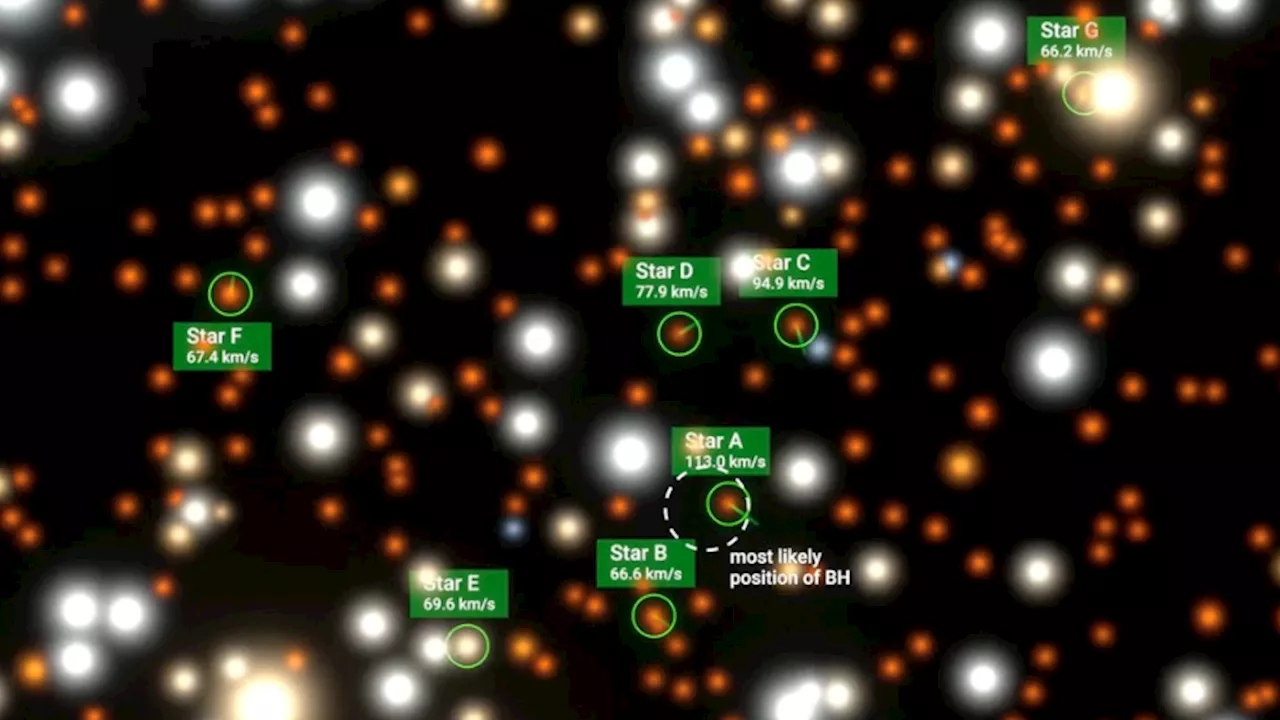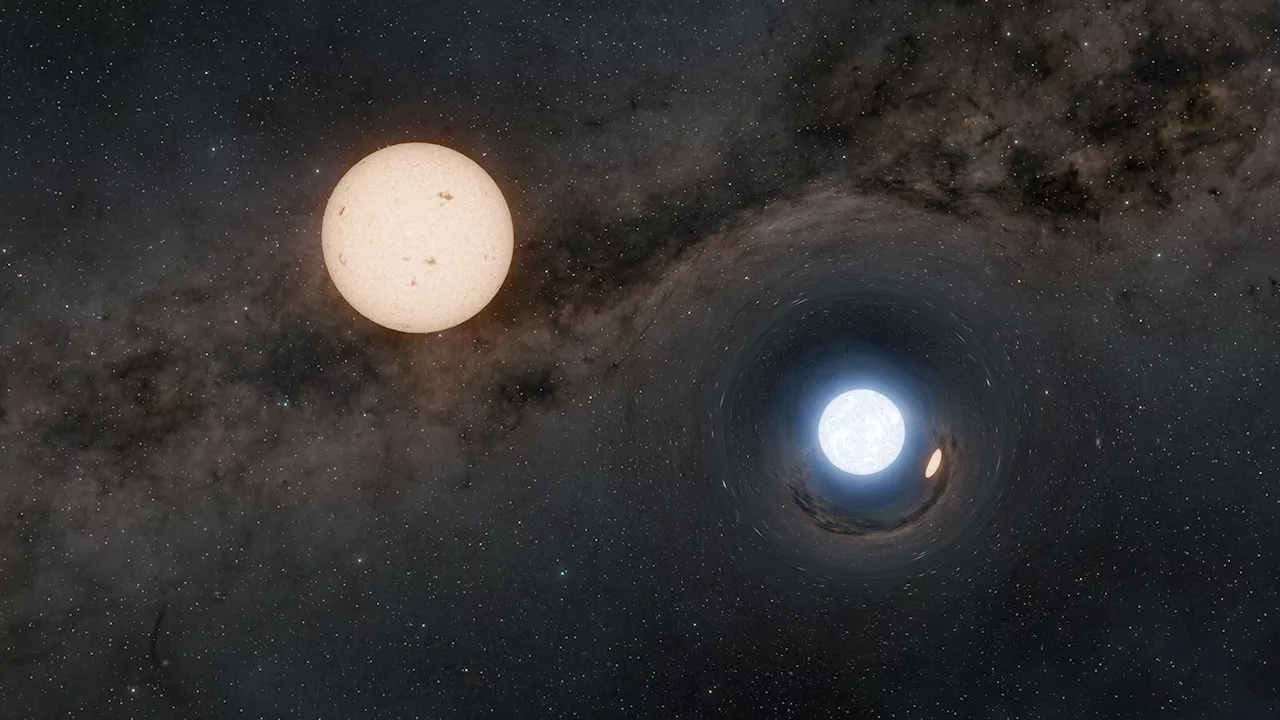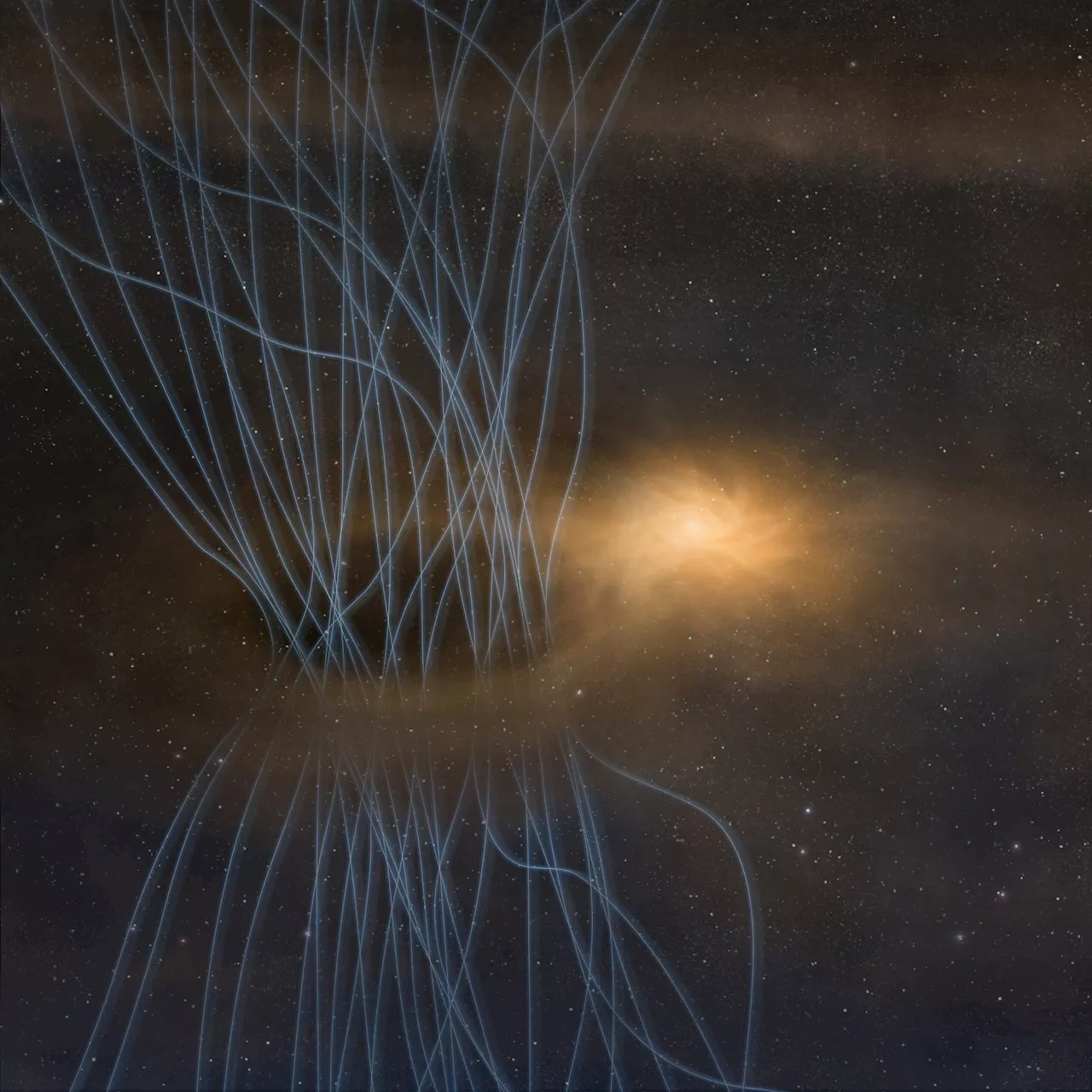Science, Space and Technology News 2024
The baby star at the center surrounded by a bright disk called a protostellar disk. Spikes of magnetic flux, gas, and dust in blue. Researchers found that the protostellar disk will expel magnetic flux, gas, and dust—much like a sneeze—during a star’s formation. Credit: ALMA radio telescope in Chile, the team discovered that the protostellar disk surrounding a nascent star expels plumes of dust, gas, and electromagnetic energy in its early stages.
For this reason, researchers have hypothesized that there is a mechanism during star development that would remove that magnetic flux. The prevailing view was that the magnetic field gradually weakened over time as the cloud was pulled into the stellar core.To get to the bottom of this mysterious phenomenon, the team set their sights on MC 27, a stellar nursery located approximately 450 light-years from Earth.
“This is a phenomenon called ‘interchange instability’ where instabilities in the magnetic field react with the different densities of the gases in the protostellar disk, resulting in an outward expelling of magnetic flux. We dubbed this a baby star’s ‘sneeze’ as it reminded us of when we expel dust and air at high speeds.”
The team expects their findings will improve our understanding of the intricate processes that shape the universe that continue to captivate the interest of both the astronomical community and the public.
United States Latest News, United States Headlines
Similar News:You can also read news stories similar to this one that we have collected from other news sources.
 Astronomers discover two new Milky Way satellite galaxy candidatesFor years, astronomers have worried about how to explain why the Milky Way has fewer satellite galaxies than the standard dark matter model predicts. This is called the 'missing satellites problem.'
Astronomers discover two new Milky Way satellite galaxy candidatesFor years, astronomers have worried about how to explain why the Milky Way has fewer satellite galaxies than the standard dark matter model predicts. This is called the 'missing satellites problem.'
Read more »
 Astronomers discover a peculiar radio galaxyUsing the LOw-Frequency ARray (LOFAR), astronomers have discovered a new radio galaxy. The newfound galaxy, designated J0011+3217, showcases peculiar features, including a one-sided secondary lobe. The finding was reported in a research paper published June 21 on the pre-print server arXiv.
Astronomers discover a peculiar radio galaxyUsing the LOw-Frequency ARray (LOFAR), astronomers have discovered a new radio galaxy. The newfound galaxy, designated J0011+3217, showcases peculiar features, including a one-sided secondary lobe. The finding was reported in a research paper published June 21 on the pre-print server arXiv.
Read more »
 Defying All Conventional Explanations: Astronomers Discover Inexplicable Flying Fox in Hydra Galaxy ClusterScience, Space and Technology News 2024
Defying All Conventional Explanations: Astronomers Discover Inexplicable Flying Fox in Hydra Galaxy ClusterScience, Space and Technology News 2024
Read more »
 Astronomers discover Earth’s closest black holeAndrew Paul is Popular Science's staff writer covering tech news. Previously, he was a regular contributor to The A.V. Club and Input, and has had recent work featured by Rolling Stone, Fangoria, GQ, Slate, NBC, as well as McSweeney's Internet Tendency. He lives outside Indianapolis.
Astronomers discover Earth’s closest black holeAndrew Paul is Popular Science's staff writer covering tech news. Previously, he was a regular contributor to The A.V. Club and Input, and has had recent work featured by Rolling Stone, Fangoria, GQ, Slate, NBC, as well as McSweeney's Internet Tendency. He lives outside Indianapolis.
Read more »
 Astronomers discover dozens of double-lined double white dwarf binariesAn international team of astronomers reports the discovery of 34 rare double-lined double white dwarf binary systems using the Intermediate-dispersion Spectrograph and Imaging System (ISIS) on the William Herschel Telescope (WHT). The finding was detailed in a research paper published on the preprint server arXiv.
Astronomers discover dozens of double-lined double white dwarf binariesAn international team of astronomers reports the discovery of 34 rare double-lined double white dwarf binary systems using the Intermediate-dispersion Spectrograph and Imaging System (ISIS) on the William Herschel Telescope (WHT). The finding was detailed in a research paper published on the preprint server arXiv.
Read more »
 Astronomers discover what may be 21 neutron stars orbiting sun-like starsMost stars in our universe come in pairs. While our own sun is a loner, many stars like our sun orbit similar stars, while a host of other exotic pairings between stars and cosmic orbs pepper the universe. Black holes, for example, are often found orbiting each other.
Astronomers discover what may be 21 neutron stars orbiting sun-like starsMost stars in our universe come in pairs. While our own sun is a loner, many stars like our sun orbit similar stars, while a host of other exotic pairings between stars and cosmic orbs pepper the universe. Black holes, for example, are often found orbiting each other.
Read more »
